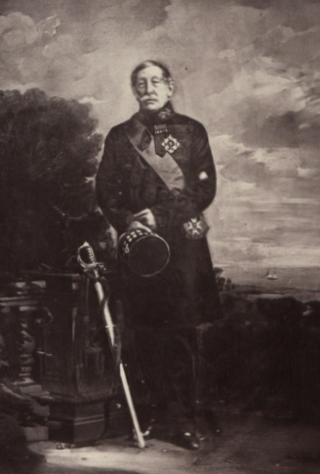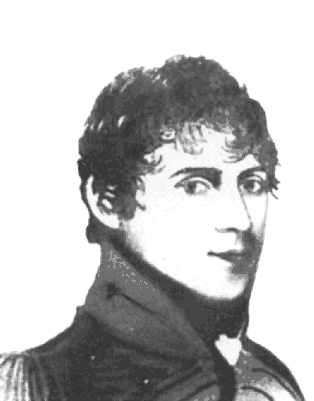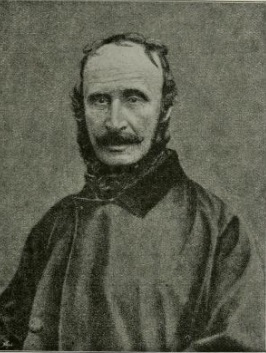

Frederick Leeds Edridge (1800 - 3 April 1841 Woolwich) was a lieutenant in the Royal Artillery and an amateur artist. [1] [2]


Frederick Leeds Edridge (1800 - 3 April 1841 Woolwich) was a lieutenant in the Royal Artillery and an amateur artist. [1] [2]
Edridge was at the Battle of Waterloo in 1815, receiving the Waterloo Medal for his service. In 1820, he joined the Royal Artillery, and was stationed with the Sixth Battalion at Gibraltar between 1830 and 1834. During this stay he painted a series of watercolours, mostly now housed with the Gibraltar Museum. [3]
Soldiering could not have been Edridge's passion in life, for he still held the rank of lieutenant by the time he left Gibraltar in 1834. The garrison there had a good reputation in the eyes of its officers who were mainly of the hunting, shooting and fishing persuasion. Edridge found diversion in his painting, a pastime he seemed to have discovered for himself. His works - mainly watercolours - verged on the naive, but have great charm and document an interesting period in the history of Gibraltar. [4]
Edridge died in Woolwich at the age of 41. [1]

General Sir Frederick Adam was a Scottish major-general at the Battle of Waterloo, in command of the 3rd (Light) Brigade. He was the fourth son of William Adam of Blair Adam and his wife Eleanora, the daughter of Charles Elphinstone, 10th Lord Elphinstone. He was later a Lord High Commissioner of the Ionian Islands, who built Mon Repos, Corfu and other important landmarks in that Protectorate.

Lieutenant-Colonel Charles Collier Michell, KH, later known as Charles Cornwallis Michell, was a British soldier, first surveyor-general in the Cape, road engineer, architect, artist and naturalist.
E Battery Royal Horse Artillery is a Close Support Battery of 1st Regiment Royal Horse Artillery. It is currently based in Purvis Lines in Larkhill Camp.

Field Marshal Sir Alexander George Woodford, GCB, KCMG, was a British Army officer. After taking part in the Anglo-Russian invasion of Holland, he served in most of the battles of the Napoleonic Wars. During the Hundred Days he commanded the 2nd battalion of the Coldstream Guards at the Battle of Quatre Bras, the Battle of Waterloo and the storming of Cambrai. He went on to become lieutenant governor and brigade commander at Malta, lieutenant governor and brigade commander at Corfu and then commander of the British garrison on the Ionian Islands before being appointed Governor and Commander-in-Chief of Gibraltar.
Lieutenant General Sir William Nicolay was a British Army officer present at the Battle of Waterloo who later became Governor of Mauritius.

Alexander Cavalié Mercer was a British artillery officer. Although he rose to the rank of general, his fame is as commander of G Troop Royal Horse Artillery in the thick of the fighting at the Battle of Waterloo, and as author of Journal of the Waterloo Campaign.

General Sir Robert William Gardiner was Master Gunner, St James's Park, the most senior ceremonial position in the Royal Artillery after the Sovereign.
General Sir John Smith was a British army general. In his early career as a Royal Artillery officer he fought in the American War of Independence, being twice captured and imprisoned by the Americans. In his later career Smith was involved in expanding the British Empire in the West Indies by protecting its trade routes, helped keep control of the islands of Gibraltar and Madeira and commanded various artillery regiments.

Major-General Sir John Mark Frederick Smith was a British general and colonel-commandant of the Royal Engineers. He was also the Conservative Member of Parliament for Chatham from 1852 to 1853 and 1857 to 1865. He was a Gentleman Usher and Fellow of the Royal Society.
General Sir Anthony Farrington, 1st Baronet DCL was a British Army officer of the Royal Artillery. He served in Gibraltar and in the American War of Independence.

Sir Augustus Simon Frazer KCB FRS, commanded the artillery at the British invasions of the Río de la Plata (1807) and the Royal Horse Artillery on Wellington's staff in the Peninsular War, and later during the Waterloo Campaign.

George Frederick Koehler was a British artist, soldier and engineer. He is known for creating a gun that recoiled allowing it to fire down the side of a mountain without sending the gun carriage flying into the air. The Koehler Depressing Carriage is still commemorated today in Gibraltar where it was an important defence during the Great Siege of Gibraltar.
Thomas Davies FRS FLS was a British Army officer, artist, and naturalist.
Lieutenant-Colonel Joseph Brome was a British Royal Artillery officer who served during the Napoleonic Wars.
Major General Percy Drummond C.B. was a British Royal Artillery officer during the Napoleonic Wars
Colonel John Suther Williamson was a British Army officer who served in the Royal Artillery during the Napoleonic Wars.

Lieutenant-General Robert Lawson was a British Army officer who served in the Royal Artillery during the American War of Independence and the Egyptian Campaign.
Colonel Sir William Robe was a British Army officer of the Royal Artillery who served in the Revolutionary and Napoleonic Wars. He was praised as an artillery commander in combat and an organiser of military operations, as well as starting the first regimental school for soldiers' children, and serving as the architect of Quebec's Anglican cathedral.
Lieutenant William Livingstone Robe was a British Army officer of the Royal Horse Artillery who was noted for his distinguished conduct in battles of the Peninsular War. He died at the Battle of Waterloo.
General Sir Edward Charles Whinyates, was a senior British Army artillery officer.